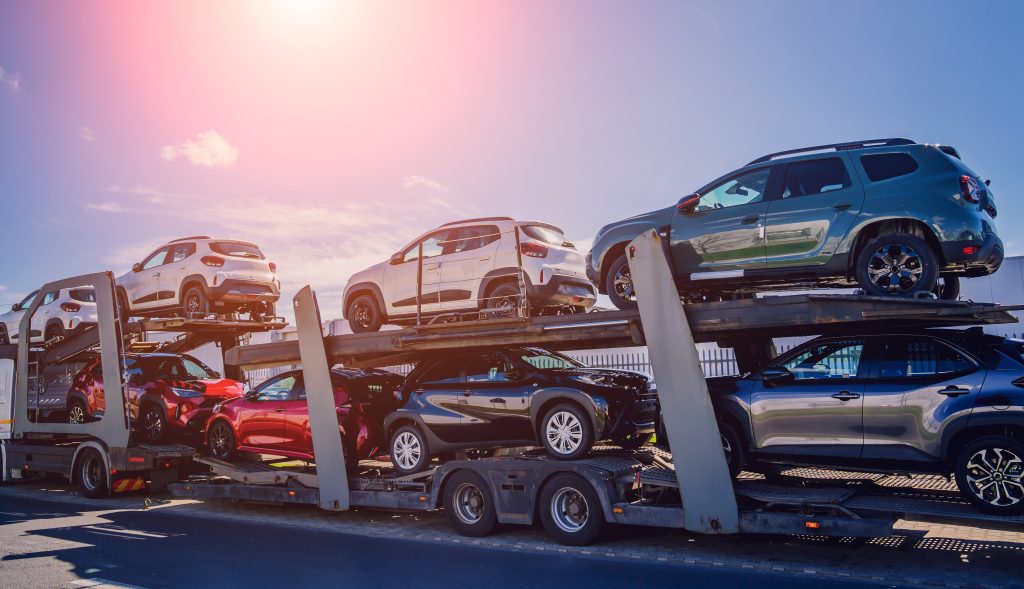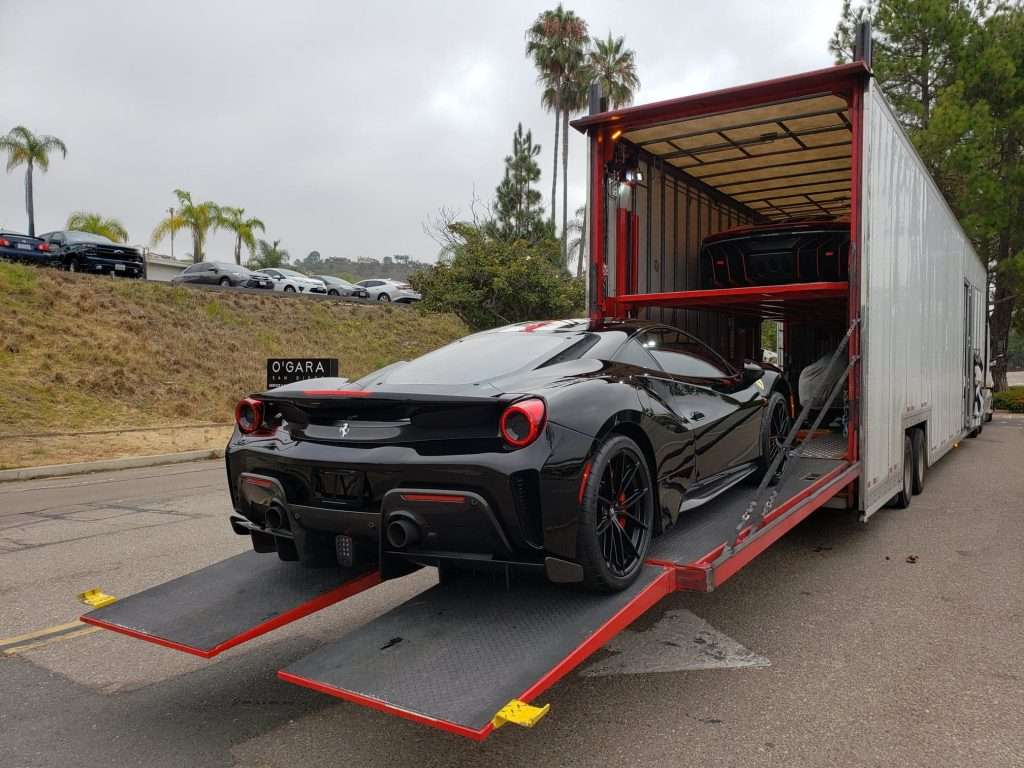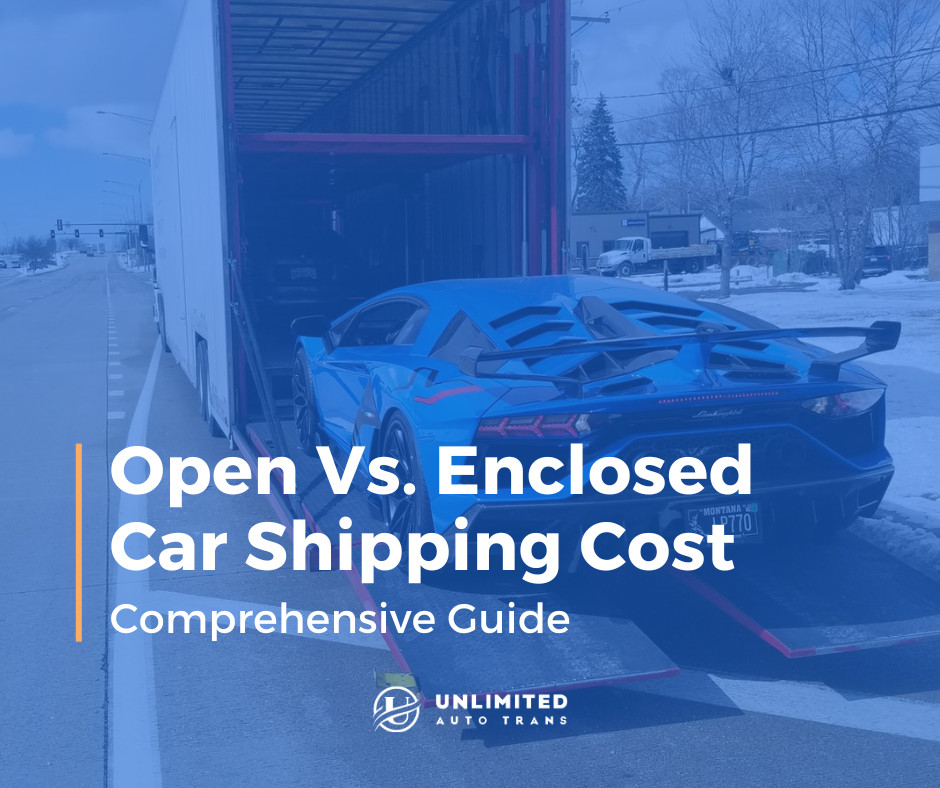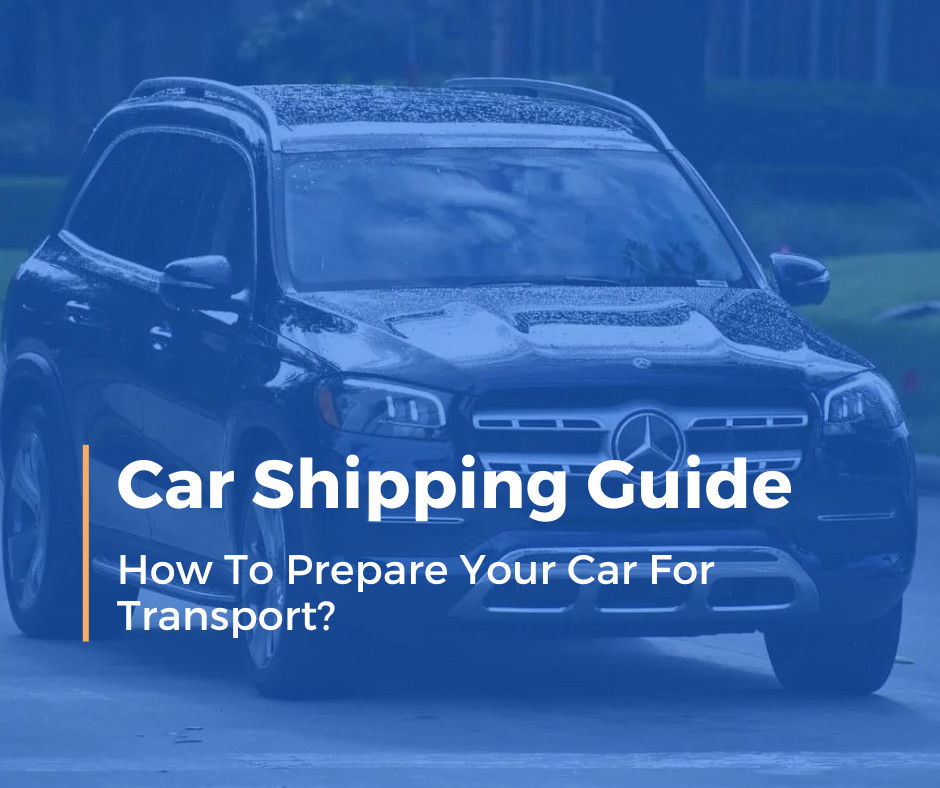Open Type Trailer:
- Cost Efficiency: Open trailers generally offer a more cost-effective solution for car shipping. The cost per mile tends to be lower across all distance ranges than enclosed trailers.
- Decreasing Costs with Distance: The cost per mile decreases as the distance increases, with the lowest cost observed for shipments over 2500 miles ($0.58 per mile). This trend suggests that open trailers are especially economical for longer distances.
| Mileage Range | Average Cost per Mile |
|---|---|
| 1000 - 1500 miles | $0.85 |
| 1500 - 2000 miles | $1.01 |
| 2000 - 2500 miles | $0.68 |
| over 2500 miles | $0.58 |
Enclosed Type Trailer:
- Higher Costs for Enhanced Protection: Enclosed trailers, offering more protection for the vehicles being transported, consistently have higher costs per mile across all ranges. This reflects the premium paid for added security against environmental factors and potential road debris.
- Less Variation with Distance: While there is still a decrease in cost per mile as distance increases, the change is less pronounced than with open trailers. The cost remains relatively high, even for longer distances, peaking at $1.71 per mile for the 1000-1500 mile range and maintaining above $1.00 per mile for longer ranges.
| Mileage Range | Average Cost per Mile |
|---|---|
| 1000 - 1500 miles | $1.71 |
| 1500 - 2000 miles | $1.16 |
| 2000 - 2500 miles | $1.11 |
| over 2500 miles | $1.43 |
Overall Implications:
- Choice of Trailer Type: The decision between open and enclosed trailers should consider both the value of the vehicle and the required protection. For high-value or luxury cars, the higher cost of enclosed trailers may be justified. For more standard vehicles, particularly over longer distances, open trailers present a significant cost-saving opportunity.
- Strategic Planning: Businesses and individuals planning vehicle transport should consider both the nature of the cargo and the mileage when selecting the type of trailer, balancing cost against risk and vehicle value.
Table of Contents
Understanding open car shipping
Open car transport is a widely used shipping method for shipping vehicles, characterized by its cost-effectiveness and accessibility.
In this method, cars are loaded onto an open-air trailer, which is typically capable of carrying multiple vehicles at once. These trailers are similar to those seen at car dealerships, transporting new cars for sale.
This method is ideal for standard models and everyday vehicles. It offers a reliable and efficient way to move cars over long distances.
What is open car transport?
Open car transport is a widely used shipping method for shipping vehicles, characterized by its cost-effectiveness and accessibility.
In this method, cars are loaded onto an open-air trailer, which is typically capable of carrying multiple vehicles at once. These trailers are similar to those seen at car dealerships, transporting new cars for sale.
This method is ideal for standard models and everyday vehicles. It offers a reliable and efficient way to move cars over long distances.
Why choose open car shipping?
- Cost-Effectiveness: Open car shipping is generally more affordable than enclosed shipping. The carriers can transport more vehicles at once, reducing the cost per vehicle.
- Availability: Open carriers are more readily available, which can lead to faster shipping times.
- Proven Safety: Open car shipping remains remarkably safe despite exposure to the elements.
Cost factors for open car shipping
Several factors influence the cost of open auto transport:
- Distance: Longer distances increase fuel costs and driver hours.
- Vehicle Size: Larger vehicles occupy more space, potentially increasing the cost.
- Location: Remote or difficult-to-access locations may incur additional charges.
- Seasonal Demand: Demand can cause prices to fluctuate, resulting in higher costs during peak seasons.

Understanding enclosed car shipping
Enclosed car shipping offers an extra layer of protection, transporting your vehicle in a fully enclosed trailer. This option is ideal for luxury, classic, or high-value vehicles.
What is enclosed car transport?
Enclosed car transport offers a premium shipping option, providing heightened protection and security for the vehicles in transit.
In this method, cars are transported in a fully enclosed trailer, safeguarding them from external elements such as weather, road debris, and dust.
Enclosed trailers carry fewer cars, so they cost more than open transport.
Why choose enclosed car shipping?
- Maximum Protection: Enclosed car carriers protect your vehicle from bad weather, dust, and road debris.
- Privacy and Security: Enclosed shipping offers more privacy and security, a crucial factor for high-end vehicles.
- Specialized Service: Enclosed shipping often includes more personalized service, with drivers experienced in handling premium vehicles.
Cost factors for enclosed car shipping
Enclosed auto shipping is typically more expensive because of:
- Limited Capacity: Enclosed carriers transport fewer vehicles, leading to a higher cost per vehicle.
- Specialized Equipment: Enclosed trailers and the expertise required for high-end vehicles add to the cost.
- Insurance: Higher insurance coverage for luxury vehicles can increase shipping costs.

Comparing open vs. enclosed car shipping costs
Understanding the differences between open vs. enclosed car shipping costs is crucial for making an informed decision.
Open trailer car shipping, on average, is a reassuringly budget-friendly option. For instance, transporting a standard sedan from New York to California could cost you around $1,100 to $1,500 with open transport, a price that won’t break the bank.
Using enclosed transport for the same journey can cost between $1,650 and $2,250. This is because of added protection and limited vehicle space.
These prices can vary based on vehicle size, seasonality, and specific route.
The cost of larger vehicles like SUVs or trucks can increase by approximately 20-30%. Prices can surge during peak seasons, such as summer, or around major holidays, because of higher demand.
Less traveled or remote routes can cost more because of added logistics. Prices may vary based on your specific shipping needs, so these estimates are just averages.
Our team of experts has gathered information to evaluate the cost differences between open and enclosed transport. Here are some quotes for comparison:
[table]
However, the exact difference depends on the factors mentioned above.
Additional considerations
Beyond cost, consider these factors before you get your vehicle shipped:
- Vehicle Type and Value: High-value vehicles might warrant the extra cost of enclosed shipping for peace of mind.
- Weather Conditions: If shipping during harsh weather, enclosed shipping offers better protection.
- Personal Preferences: Some owners prefer the added security and protection of enclosed shipping, regardless of cost.
Open Vs. enclosed car shipping: Pros and cons
Choosing between open and enclosed car shipping carriers isn’t just about cost. It’s about balancing budget, vehicle needs, and personal preferences.
Open carriers are suitable for regular cars and tight budgets. Enclosed carriers, on the other hand, are designed for fancy or old cars that require extra care.
Open car shipping
Pros
- Cost-Effectiveness
- Flexible Scheduling
- Regular Inspections
Cons
- Exposure to Elements
- Security Concerns
- Weather-Related Delays
Enclosed car shipping
Pros
- Optimal Protection
- Higher Insurance Coverage
- Ideal for Luxury Cars
Cons
- Higher Costs
- Limited Capacity
- Reduced Fuel Efficiency

In conclusion
When it comes to car transport, deciding between open and enclosed carriers depends on cost, vehicle type, and personal preference.
Open car shipping is affordable and dependable for regular vehicles. Enclosed car shipping ensures extra safety for valuable or vintage cars.
By considering the factors outlined in this guide, you can make an informed decision that best suits your vehicle’s needs and your budget.
When you choose a carrier, you’re not just shipping a car; you’re trusting professionals with a valuable asset.
Choose wisely between open vs. enclosed car shipping costs, and your vehicle will arrive at its destination safely and efficiently.
FAQs in car shipping
Both open and enclosed shipping are safe, but enclosed shipping offers additional protection against the elements and road debris.
Shipping times vary based on distance, carrier availability, and route. Open carriers might offer faster service due to higher availability.
Most carriers prefer the car to be empty or have minimal personal items due to weight and security concerns.
For a detailed answer read our article: Why It Is Vital to Clean Your Car Before Shipping?
Yes, both open and enclosed car shipping options include insurance. However, the coverage details may vary, so it's advisable to confirm specifics with your chosen carrier.
To prepare your car, clean it thoroughly. Take note of any damages you may find. Remove all personal items from the car. Lastly, ensure that the gas tank is only filled up to a quarter.
For more information check out our blog post: Car Shipping Guide – How to prepare your car for transport.



